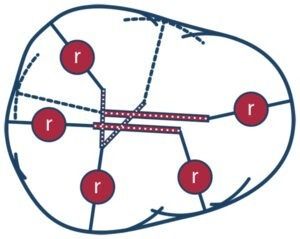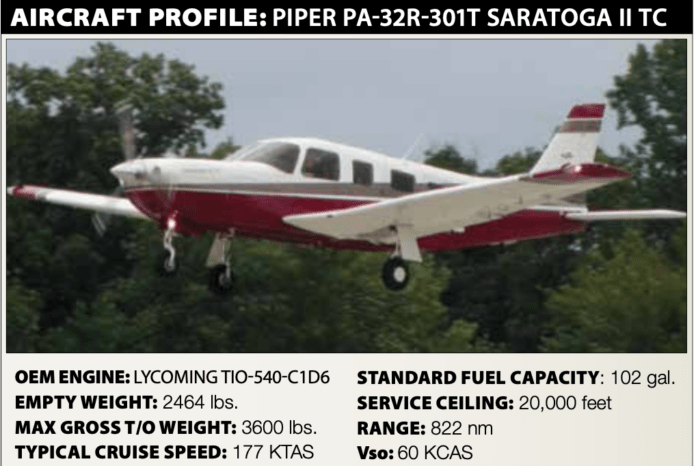The circle-to-land maneuver at the conclusion of an instrument approach has earned a reputation over the years as one of the riskier things we can do in an airplane, to the extent many major carriers don’t allow their pilots to perform it—they want stabilized, “straight-in” or nothing. The good news is that’s not necessarily a bad thing, since the accident record is heavily salted with such accidents.
The even-better news is that the proliferation of RNAV GPS-based approaches has resulted in straight-in procedures to both ends of a typical runway, all but eliminating the need to circle. The desire to circle is another thing, however, and is still with us. It most often crops up when we’re arriving from the wrong direction and, for whatever good or bad reasons, don’t want to fly all the way to the other side of the airport to shoot an opposite-direction approach to the sole runway at our destination just because of a little wind at the surface.
We can spend a lot of time debating whether the circle-to-land maneuver is safe and should be flown. (Hint: If the FAA allows it, it’s by definition “safe,” which isn’t the correct answer, or the correct question.) Instead, we should spend time talking about how to do it and what to watch for. That’s not the theme of this month’s Accident Probe, though it has been a focus of feature articles over the years, most recently in June 2021, and will be again. For now, the sidebar below has some tips on how and how not to fly them.
The increased risk posed by the circle-to-land maneuver flows from proximity to the ground, where there’s less of an error margin for any mistakes we make or mechanical problems we encounter. There’s also the matter of flying slowly and trying to remain within a certain distance of the airport. Combine poor weather—which is why we’re flying the approach in the first place—and/or night operations, and the additional risk should become obvious. If it doesn’t, read on.
BACKGROUND
On February 21, 2019, at about 2004 Eastern time, a Piper PA-32R-301T Saratoga II TC was destroyed when it collided with terrain near Goshen, Indiana. The solo pilot sustained fatal injuries. Dark night visual conditions prevailed.
The pilot departed Runway 27 at the Goshen Municipal Airport (GSH) about 1950 and contacted South Bend Approach Control, requesting a local clearance to conduct a practice RNAV (GPS) RWY 9 approach and circle to land on Runway 27. According to radar data, after taking off from Runway 27, the airplane climbed straight west and then turned back to the east, overflying the departure airport. The airplane started a turn to the north about 1.2 miles east of GSH. The last data point showed the airplane at about 1125 feet msl (298 feet above GSH’s 827-foot field elevation), heading 337 degrees, at 58 knots groundspeed. The published circling minimum descent altitude for the RNAV (GPS) RWY 9 approach is 1320 feet msl, for a category B aircraft. (The NTSB report erroneously states 1460 feet is that approach’s circling MDA.)
A witness observed the airplane flying relatively low east of GSH. An airport security video showed the airplane flying toward the airport at what appeared to be a level attitude, followed by a flash of light. The airplane then disappeared from view, and the video recorded what appeared to be a ground explosion and fire. The airplane wreckage was located by first responders about 1.37 miles east of the approach end of Runway 27, adjacent to damaged 250-foot-high power lines.

One of the first things we should keep in mind about circling approaches is we don’t always have to descend to the published minimum descent altitude to execute them. In fact, it’s a good idea that we don’t, if the weather allows. Instead, it’s a better idea to descend only as low as we need to while flying the circling maneuver.
Another thing to keep in mind is that the speed at which we circle is up to us. Using the 1.3 VSO reference speed for determining our circling category when there’s no published VREF, doesn’t afford us much margin above stall, so it’s common to choose a higher speed, maybe 1.5 VSO, while accepting the possibility of a higher circling category and minimum descent altitude.
A final thought is that things look different when we’re lower than normal, in poor visibility and/or at night. We’ll never know, but we’d wager this month’s accident pilot let himself get fooled by an optical illusion, making him think the airplane was higher than it actually was. As noted in this article’s main text, the pilot should have been at 1320 feet until a normal descent to the runway could be made. He was “only” 200 feet too low; the tolerances are that tight.
INVESTIGATION
Local airport personnel estimated the pilot’s total flight hours at 1500, with 600 hours in the accident airplane, which he flew regularly. Its most recent annual inspection was completed in November of 2018. The local FBO reported the airplane was clean, well maintained, and the interior of the plane was organized whenever it was brought in for maintenance.
According to the airport manager, all airport lighting was operational at the time of the accident, and the runway lighting was turned on. Post-accident inspection of the facility lighting revealed functionality of all systems.
The accident site’s elevation was 867 feet msl. The wreckage was consistent with the airplane impacting near the top of the 250-foot-high power line wires (about 1117 feet msl). Portions of the power line wires were found embedded around the propeller, and both wings exhibited damage consistent with contact with an electric power line. The landing gear were found in the extended position.
No evidence of preimpact mechanical malfunctions or failures was found with the airframe, and flight control continuity was established to the extent possible due to fire damage. Examination of the engine did not show evidence of preimpact mechanical malfunctions or failures, and drivetrain continuity was established. The propeller blades showed evidence consistent with contacting power lines and with rotation. One blade exhibited a gouge and aft bending; the second blade exhibited aft bending, scratches and dark areas consistent with thermal damage around the scratches. The third blade exhibited aft bending, a gouge in the leading edge and a scratch from the gouge to the trailing edge on the aft face of the blade.
PROBABLE CAUSE
The NTSB determined the probable cause(s) of this accident to include: “The pilot’s failure to maintain adequate altitude for undetermined reasons during a practice circling approach in dark night visual meteorological conditions, which resulted in a collision with power lines.”
Why the pilot was low enough to collide with the power lines is the question. One answer is he couldn’t see them, thanks to the dark night conditions. But he was at 1117 feet when he should have been no lower than 1320 feet “until the aircraft is continuously in a position from which a descent to a landing on the intended runway can be made at a normal rate of descent and using normal maneuvers,” as the FAA states it in the Instrument Procedures Handbook, FAA-H-8083-16B.
We practice various maneuvers and procedures to obtain and maintain proficiency with them. On its face, there’s minimal risk involved with going out to practice circling approaches at our home airport. The risk is greater, however, if we do it without a safety pilot or instructor because, well, we might do it wrong (that’s why it’s called practice). Practice them on a dark night, solo, and risk nears its maximum.




